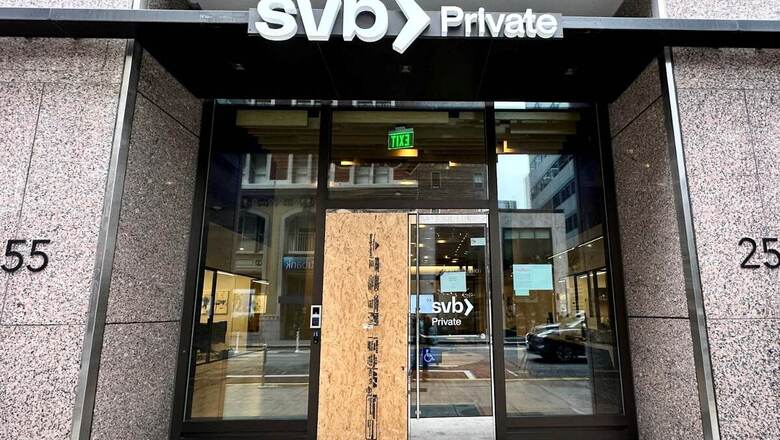
views
The collapse of Silicon Valley Bank, also know as SVB, is being termed as the biggest bank failure since the crisis at Washington Mutual in 2008 or the global financial crisis. This was the 16th biggest lender in the US and was the go-to bank for several startups across the world.
The bank failed after clients — many of them venture capital firms and VC-backed companies that the bank had cultivated over time — began pulling out their deposits, creating a run on the bank. The SVB collapse led investors to speculate that the Fed would now hesitate to hike interest rates by a super-sized 50 basis points this month.
What Is SVB?
Silicon Valley Bank, which was the 16th biggest commercial lender in the US, is a subsidiary of SVB Financial Group and is considered the biggest bank in Silicon Valley
SVB has a relationship with more than 50 per cent of all venture-backed companies in the US. Venture or private equity funds marked up about 56 per cent of the bank’s global banking portfolio in 2022, according to Fortune.com.
It was the go-to bank for several startups across the world.
SVB Crisis: The Timeline
March 8: SVB annouces it has sold $21 billion of securities from its portfolio at a $1.8 billion loss. The Group was holding a $2.25 billion share sale to shore up finances, which included US Treasuries and mortgage-backed securities
Crypto-based lender Silvergate annoucnes a plan to wind down operations and facilitate liquidate owing to heavy losses following the collapse of crypto exchange FTX, led to increased withdrawals from SVB
March 9: Regulatory filing shows SVB has a negative cash balance of $958 million. SVB’s shares plunge 41 per cent, its biggest slump since 1998. “Despite the bank being in sound financial condition prior to March 9th, investors and depositors reacted by withdrawing $42 billion of deposits, causing a run on the bank,” says the filing.
March 10: The US Federal Deposit Insurance Corporation (FDIC) announced that SVB “was closed today by the California Department of Protection and Innovation, which appointed the FDIC as receiver”.
FDIC says all insured depositors will have complete access to their deposits until Monday, March 13.
March 12: US President Joe Biden assures the American people and businesses that a resolution of the collapse of the Silicon Valley Bank will not put taxpayer’s money at risk, and they can have confidence that their bank deposits would be there when they need it.
The Background
SVB in 2021 saw a mass influx in deposits, which jumped from $61.76 billion at the end of 2019 to $189.20 billion at the end of 2021. As deposits grew, SVB could not grow its loan book fast enough to generate the yield it wanted to see on this capital.
The bank, therefore, purchased a large amount (over $80 billion) in mortgage-backed securities (MBS) with these deposits for their hold-to-maturity (HTM) portfolio. Almost 97 per cent of these MBS were over 10 years in duration, with a weighted average yield of 1.56 per cent.
However, with the rise in US Fed interest rates, the value of SVB’s mortgage-backed securities (MBS) plummeted. This is because investors can now purchase long-duration “risk-free” bonds from the Fed at a 2.5x higher yield. Precisely, with the rising US Fed interest rates, the value of existing bonds with lower payouts fell in value.
(With Inputs from Agencies)
Read all the Latest Business News here




















Comments
0 comment